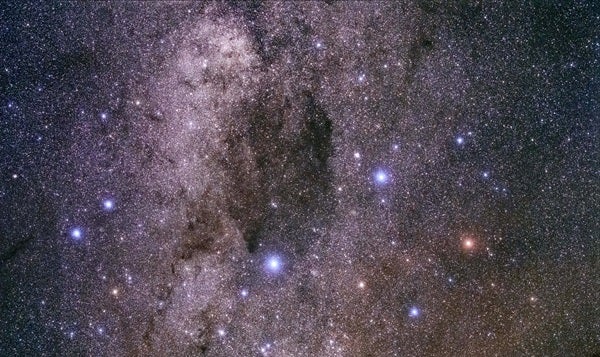With the possible exception of the Big Dipper, the Southern Cross ranks as the sky’s most familiar asterism (a recognizable group of stars that is not a constellation). Indeed, its three brightest stars are among the 25 brightest in the whole sky. This stellar pattern is so famous that five countries depict it on their flags: Australia, Brazil, New Zealand, Papua New Guinea, and Samoa.
Mariners plying southern waters have used the Southern Cross as a direction marker for centuries. Its long axis points to the South Celestial Pole, which is handy because, unlike in the Northern Hemisphere, no bright star lies anywhere near that spot. Specifically, a line drawn from magnitude 1.6 Gacrux (Gamma [γ] Crucis) through magnitude 0.8 Acrux (Alpha [α] Crucis) and extended 25° will lead an observer close to the South Celestial Pole.
Officially, the Southern Cross is the constellation Crux, a star pattern picked out by early European explorers. Crux ranks as the smallest of the 88 constellations, covering a paltry 68.45 square degrees. That area is only 0.166 percent of the sky. Because it contains several bright stars, however, it tops the list in terms of overall brightness, which is the number of visible stars in a constellation divided by the constellation’s area in square degrees. That value for Crux is 29.2, far surpassing the second-place finisher for overall brightness, Corona Australis, which has a value of 16.4.
Make sure to explore Astronomy‘s full list of 101 cosmic objects you must see. New entries will be added each week throughout 2022.










